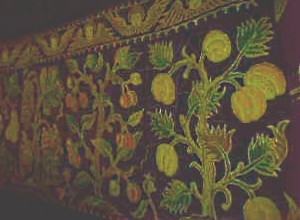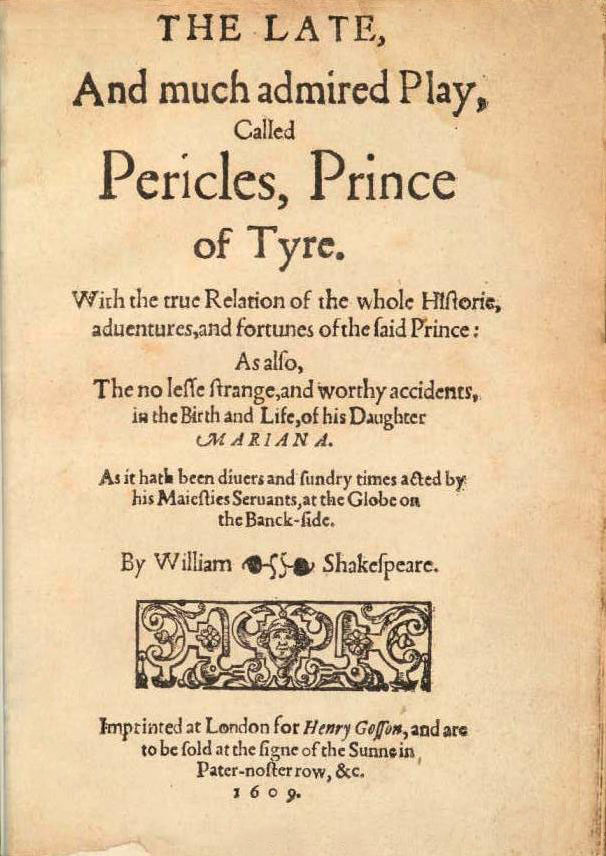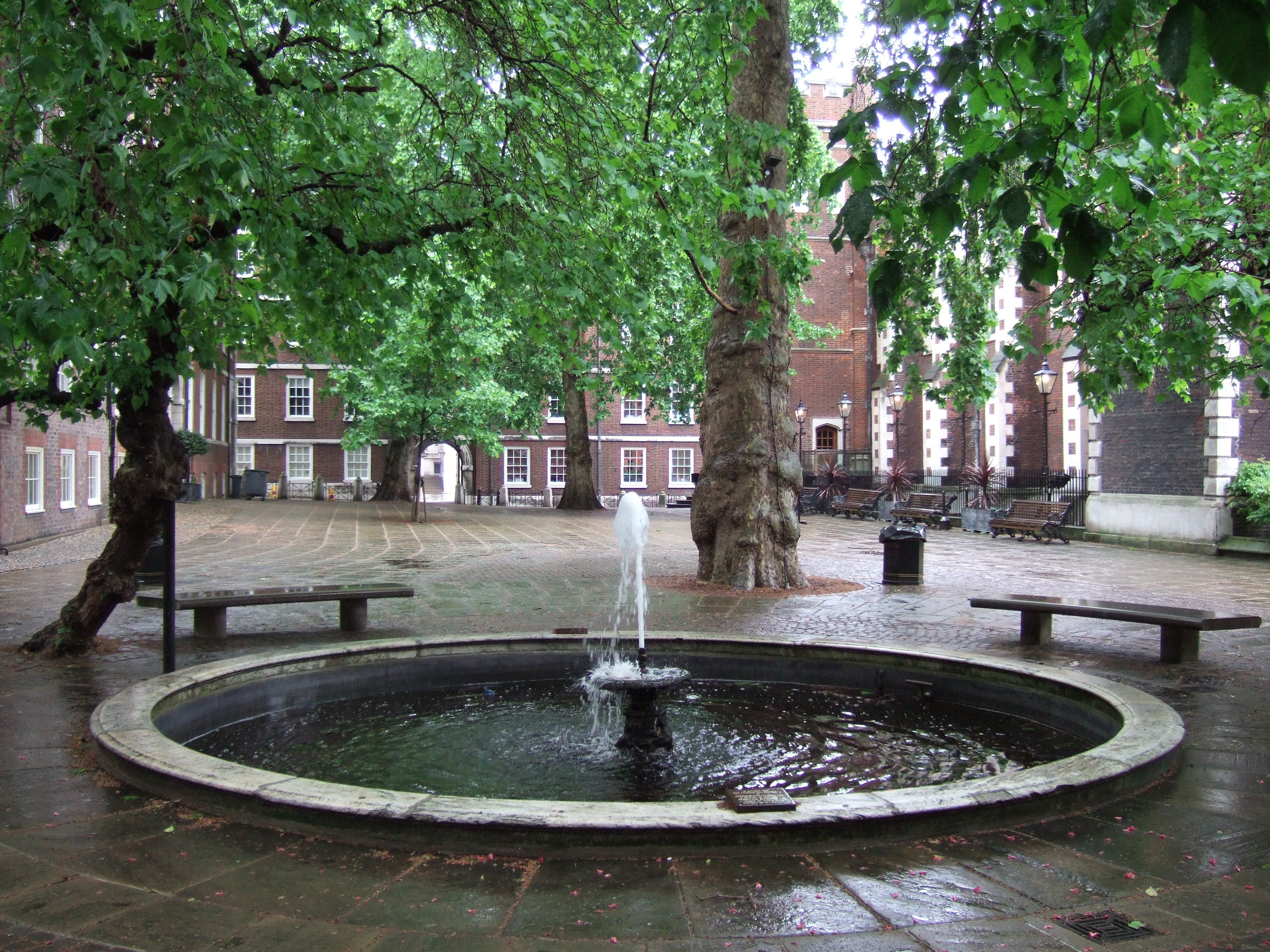|
Thomas Peend
Thomas Peend or Delapeend (''fl.'' 1556–1577) was a Tudor poet and lawyer. He is chiefly remembered as the author-translator of ''A Pleasant Fable of Hermaphroditus and Salmacis'' (1565). Family Thomas Peend was the son of John Peend of Leeds, near Maidstone in Kent. When he wrote his will in 1570, Edward Pynde of Hollingbourne, a few miles north of Leeds, named Thomas Peend of Leeds as his cousin. Finally, when Peend dedicated ''A Most Notable History of John, Lord Mandozze'' (1565) to sir Thomas Kempe of Wye, Kent (1517–1591), he called Kempe his kinsman. School, university, inns of court Peend was recorded as a scholar at King’s School, Canterbury, in 1556. The master was the antiquary John Tywne (d. 1581); and one of Peend’s class-mates was Twyne’s son, Lawrence Twyne, who would go on to write ''The Pattern of Painful Adventures'' (1576), a source for Shakespeare’s Pericles. Peend matriculated as a pensioner (fee-paying student) at Christ’s College, Ca ... [...More Info...] [...Related Items...] OR: [Wikipedia] [Google] [Baidu] |
Maidstone
Maidstone is the largest Town status in the United Kingdom, town in Kent, England, of which it is the county town. Maidstone is historically important and lies east-south-east of London. The River Medway runs through the centre of the town, linking it with Rochester, Kent, Rochester and the Thames Estuary. Historically, the river carried much of the town's trade as the centre of the agricultural county of Kent, which is known as the Garden of England. There is evidence of settlement in the area dating back before the Stone Age. The town, part of the borough of Maidstone, had an approximate population of 100,000 in 2019. Since World War II, the town's economy has shifted from heavy industry towards light industry and services. Toponymy Anglo-Saxon period of English history, Saxon charters dating back to show the first recorded instances of the town's name, ''de maeides stana'' and ''maegdan stane'', possibly meaning ''stone of the maidens'' or ''stone of the people''. The latt ... [...More Info...] [...Related Items...] OR: [Wikipedia] [Google] [Baidu] |
Hollingbourne
Hollingbourne is a village and civil parishes in England, civil parish in the borough of Maidstone (borough), Maidstone in Kent, England. The parish is located on the southward slope of the North Downs to the east of the county town, Maidstone. The parish population is around 900 and has three conservation areas: Upper Street in the village centre and the outlying hamlets of Broad Street and Eyhorne Street. Geography The village is four miles (6.4 km) from Maidstone. Its church is dedicated to All Saints. Hollingbourne railway station, on the Maidstone-Ashford line, serves the village. There is also a bus connecting Hollingbourne to Maidstone. The North Downs Way National Trail passes through the village, as does the Pilgrims' Way, an ancient trackway historically associated with pilgrimage routes to Canterbury. The village has two large public houses. Hollingbourne Hill was a major measuring point in the trigonometric survey linking the Royal Greenwich Observatory an ... [...More Info...] [...Related Items...] OR: [Wikipedia] [Google] [Baidu] |
Leeds, Kent
Leeds is a village and civil parish in the Maidstone district of Kent, England. Location The village is located to the east of Maidstone, the county town of Kent. Etymology It appeared in the Domesday Book as ''Esledes'', possibly referring to a stream name. It is so called because the village is on the hillside above the River Len, a tributary of the River Medway. An alternative explanation for the name is that it derived its name from Ledian, who built the first wooden fortress here in 978. Notable features St Nicholas's Church has the second largest Norman tower in England. Leeds Priory was dissolved in 1539. To the east of the village is Leeds Castle. The church and the castle are Grade I listed buildings and the site of the priory is a scheduled monument. To the west and between Otham and Leeds the area of Caring is located. Caring has a number of modern farmhouses, in the style of an Oast house An oast, oast house (or oasthouse) or hop kiln is a building desig ... [...More Info...] [...Related Items...] OR: [Wikipedia] [Google] [Baidu] |
Wye, Kent
Wye is a village and former Civil parishes in England, civil parish, now in the parish of Wye with Hinxhill, in the Borough of Ashford, Ashford district, in Kent, England, from Ashford, Kent, Ashford and from Canterbury. It is the main settlement in the parish of Wye with Hinxhill. Hops, Hop varieties including Wye Challenger were bred at #Wye College, Wye College and named for the village. In 2013, ''The Sunday Times, Sunday Times'' readers voted Wye the third best place to live in the UK. History The village's name comes from the Anglo-Saxon language, Old English "Wēoh" meaning ''idol'' or ''shrine''. Wye may have been used for worship by the pre-Christian Angles (tribe), Angles. Wye became an important communications centre because of a ford (crossing), ford across the River Stour, Kent, River Great Stour connecting with ancient trackways across the North Downs. Roman Empire, Romans constructed a road between Canterbury and Hastings using the gap through the North Downs ... [...More Info...] [...Related Items...] OR: [Wikipedia] [Google] [Baidu] |
The King's School, Canterbury
The King's School is a public school in Canterbury, Kent, England. It is a member of the Headmasters' and Headmistresses' Conference and the Eton Group. It is Britain's oldest public school and is considered to be the oldest continuously operating school in the world, as education on the Abbey and Cathedral grounds has been uninterrupted since AD 597. History The school started as a medieval cathedral school said to have been founded during late antiquity in AD 597, a century after the Fall of the Western Roman Empire, by Augustine of Canterbury, considered the "Apostle to the English" and a founder of the English Church, thus making it arguably the world's oldest extant school. This is based on the fact that St Augustine founded an abbey (within the current school's grounds) where it is known that teaching took place. When the Dissolution of the Monasteries took place, the school was re-founded by royal charter in 1541. A Headmaster, a Lower Master, and fifty King's Schol ... [...More Info...] [...Related Items...] OR: [Wikipedia] [Google] [Baidu] |
John Twyne
John Twyne (c.1505–1581) was an English schoolmaster, scholar and author, and also Member of Parliament for Canterbury. Life He was born about 1501 at Bullington, Hampshire, the son of William Twyne. He was educated, according to Anthony Wood, at New Inn, Oxford, but the matter is uncertain and he seems to have frequented Corpus Christi College; he says he saw there Richard Foxe, Juan Luis Vives, and others. He graduated B.C.L. on 31 January 1525, and then married and became master of the free grammar school at Canterbury. Twyne's school was a success, and he grew rich, purchasing land. He took an active part in the municipal affairs of Canterbury: he was a common councilman from 1539 to 1547 and 1548 to 1550, Sheriff of Canterbury for 1544–45, an alderman from 1550 to 1562 and mayor of the city for 1553–4. In 1553 he represented the city in parliament. He gave offence to the Duke of Northumberland, and on 18 May the mayor of Canterbury was directed to send him up t ... [...More Info...] [...Related Items...] OR: [Wikipedia] [Google] [Baidu] |
The Pattern Of Painful Adventures
''The Pattern of Painful Adventures'' (1576) is a prose novel. A later edition, printed in 1607 by Valentine Simmes and published by Nathaniel Butter, was a source for William Shakespeare's play ''Pericles, Prince of Tyre''. There was at least one intermediate edition, around 1595. It was a translation by Lawrence Twine of the tale of Apollonius of Tyre from John Gower's ''Confessio Amantis ''Confessio Amantis'' ("The Lover's Confession") is a 33,000-line Middle English poem by John Gower, which uses the confession made by an ageing lover to the chaplain of Venus as a frame story for a collection of shorter narrative poems. Accor ...'' (in Middle English verse). It is also said to be translated from a French version. William Henry Schofield stated that Shakespeare used both sources. William Henry Schofield, ''English Literature from the Norman Conquest to Chaucer'', p. 306. Notes External linksBritish Library - Shakespeare Quartos William Shakespeare 1576 novels ... [...More Info...] [...Related Items...] OR: [Wikipedia] [Google] [Baidu] |
Pericles, Prince Of Tyre
''Pericles, Prince of Tyre'' is a Jacobean play written at least in part by William Shakespeare and included in modern editions of his collected works despite questions over its authorship, as it was not included in the First Folio. It was published in 1609 as a quarto, was not included in Shakespeare's collections of works until the third folio, and the main inspiration for the play was Gower's '' Confessio Amantis''. Various arguments support the theory that Shakespeare was the sole author of the play, notably in DelVecchio and Hammond's Cambridge edition of the play, but modern editors generally agree that Shakespeare was responsible for almost exactly half the play — 827 lines — the main portion after scene 9 that follows the story of Pericles and Marina. Modern textual studies suggest that the first two acts, 835 lines detailing the many voyages of Pericles, were written by a collaborator, who may well have been the victualler, panderer, dramatist and pamphleteer ... [...More Info...] [...Related Items...] OR: [Wikipedia] [Google] [Baidu] |
Christ's College, Cambridge
Christ's College is a Colleges of the University of Cambridge, constituent college of the University of Cambridge, England. The college includes the Master, the Fellows of the College, and about 450 undergraduate and 250 graduate students. The college was founded by William Byngham in 1437 as God's House. In 1505, the college was granted a new royal charter, was given a substantial endowment by Lady Margaret Beaufort, and changed its name to Christ's College, becoming the twelfth of the Cambridge colleges to be founded in its modern form. Alumni of the college include the poet John Milton, the naturalist Charles Darwin, as well as the Nobel Laureates Martin Evans, James Meade, Alexander R. Todd, Baron Todd, Alexander Todd and Duncan Haldane. The Master is Simon McDonald, Baron McDonald of Salford, Lord McDonald of Salford. History Christ's College was founded by William Byngham in 1437 as God's House, on land which was soon after sold to enable the enlargement of King's Colleg ... [...More Info...] [...Related Items...] OR: [Wikipedia] [Google] [Baidu] |
Middle Temple
The Honourable Society of the Middle Temple, commonly known simply as Middle Temple, is one of the four Inns of Court entitled to Call to the bar, call their members to the English Bar as barristers, the others being the Inner Temple (with which it shares Temple Church), Gray's Inn and Lincoln's Inn. It is located in the wider Temple, London, Temple area of London, near the Royal Courts of Justice, and within the City of London. As a Liberty (division), liberty, it functions largely as an independent local government authority. History During the 12th and early 13th centuries the law was taught, in the City of London, primarily by the clergy. But a papal bull in 1218 prohibited the clergy from practicing in the secular courts (where the English common law system operated, as opposed to the Roman Civil law (legal system), civil law favoured by the Church). As a result, law began to be practised and taught by laymen instead of by clerics. To protect their schools from competi ... [...More Info...] [...Related Items...] OR: [Wikipedia] [Google] [Baidu] |
Ulcombe
Ulcombe is a village and civil parish near the town of Maidstone in Kent, England. The name is recorded in the Domesday Book and is thought to derive from ' Owl-coomb': 'coomb' (pronounced 'coo-m') meaning 'a deep little wooded valley; a hollow in a hill side' (Chambers Dictionary) in Old English. The original deserted Medieval village site lies to the east of the parish church in a valley. There is also a water-mill below this site, probably of early origins. It stands below the Greensand Way. There is much evidence from recent archaeological fieldwork, undertaken under the direction of Neil Aldridge, for prehistoric and later occupation. A number of Palaeolithic hand-axes have been found to the east of Great Tong Bank, and are the result of solifluction over the last 70,000 years from an earlier river system. Lithic implements from the Mesolithic, Bronze Age and Neolithic periods show that the landscape was being used by early settlers. The Iron Age is the period when the loca ... [...More Info...] [...Related Items...] OR: [Wikipedia] [Google] [Baidu] |
Arthur Golding
Arthur Golding (May 1606) was an English translator of more than 30 works from Latin into English. While primarily remembered today for his translation of Ovid's ''Metamorphoses'' because of its influence on William Shakespeare's works, in his own time he was most famous for his translation of Caesar's ''Commentaries'', and his translations of the sermons of John Calvin were important in spreading the doctrines of the Protestant Reformation. Biography Arthur Golding was born in East Anglia, before 25 May 1535/36, the second son of John Golding of Belchamp St Paul and Halstead, Essex, an auditor of the Exchequer, and his second wife, Ursula (d. c. 1564), daughter and co-heir of William Merston of Horton in Surrey, in a family of eleven children (four from John Golding's first wife, Elizabeth). In the 15th and 16th centuries, the Golding family had prospered in the cloth trade, and by marrying heiresses had become fairly wealthy and respectable by the time of Arthur's birth, ... [...More Info...] [...Related Items...] OR: [Wikipedia] [Google] [Baidu] |






